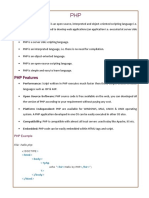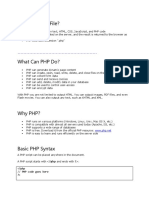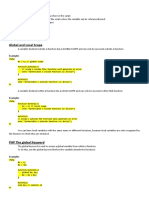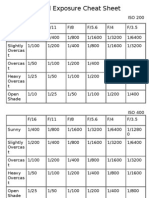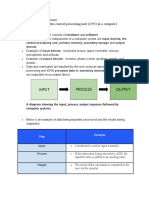0% found this document useful (0 votes)
50 views19 pagesUNIT 1 - WFS - PHP Fundamentals
The document provides an overview of PHP, a server-side scripting language created in 1994, highlighting its features, common uses, and characteristics. It covers essential concepts such as variable types, scopes, constants, and operators, along with examples of basic PHP syntax and functionality. Additionally, it compares the 'echo' and 'print' statements and discusses data types and their applications in PHP programming.
Uploaded by
pablolathiyaCopyright
© © All Rights Reserved
We take content rights seriously. If you suspect this is your content, claim it here.
Available Formats
Download as PDF, TXT or read online on Scribd
0% found this document useful (0 votes)
50 views19 pagesUNIT 1 - WFS - PHP Fundamentals
The document provides an overview of PHP, a server-side scripting language created in 1994, highlighting its features, common uses, and characteristics. It covers essential concepts such as variable types, scopes, constants, and operators, along with examples of basic PHP syntax and functionality. Additionally, it compares the 'echo' and 'print' statements and discusses data types and their applications in PHP programming.
Uploaded by
pablolathiyaCopyright
© © All Rights Reserved
We take content rights seriously. If you suspect this is your content, claim it here.
Available Formats
Download as PDF, TXT or read online on Scribd
/ 19

































